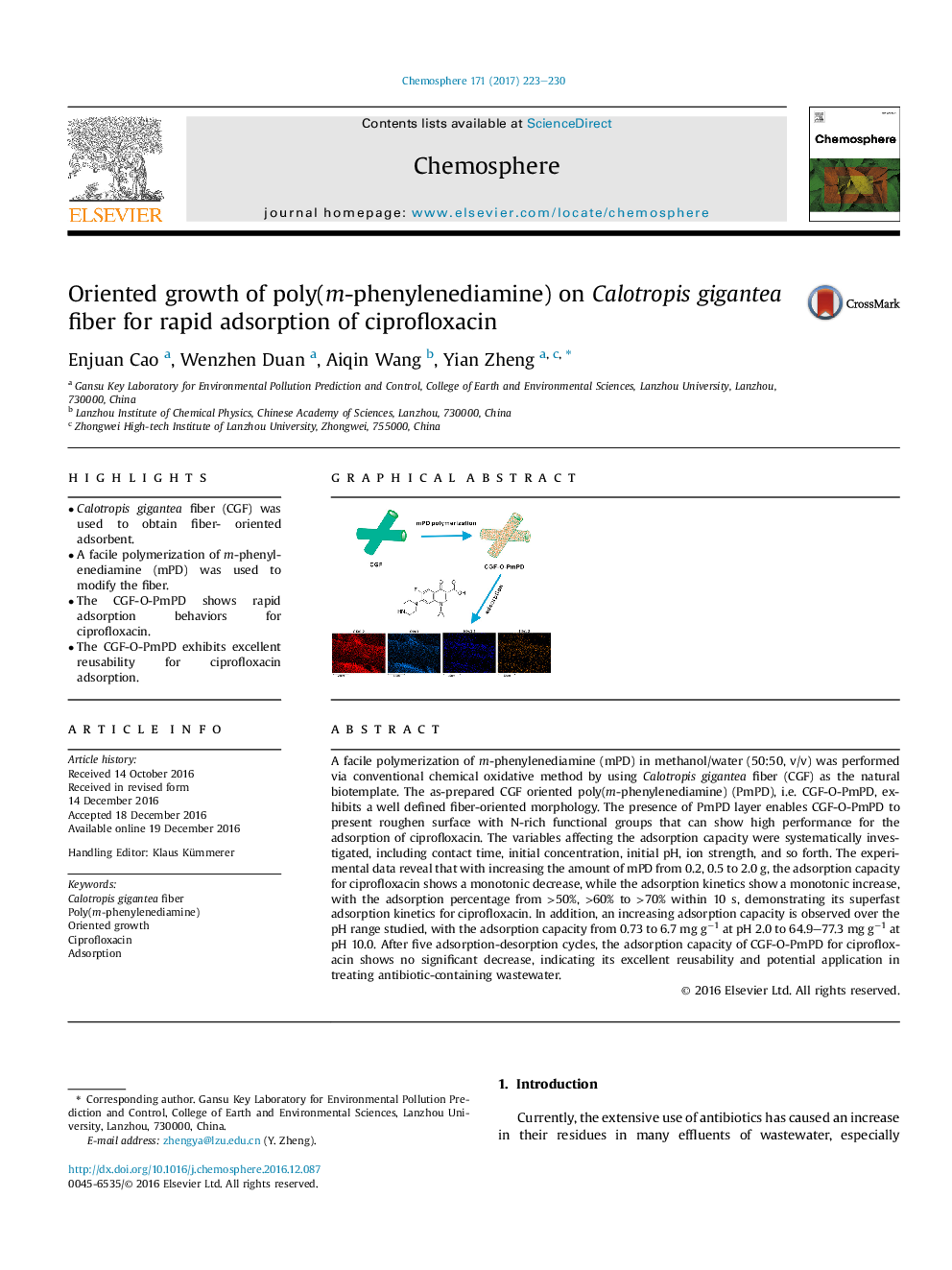| Article ID | Journal | Published Year | Pages | File Type |
|---|---|---|---|---|
| 5746387 | Chemosphere | 2017 | 8 Pages |
â¢Calotropis gigantea fiber (CGF) was used to obtain fiber- oriented adsorbent.â¢A facile polymerization of m-phenylenediamine (mPD) was used to modify the fiber.â¢The CGF-O-PmPD shows rapid adsorption behaviors for ciprofloxacin.â¢The CGF-O-PmPD exhibits excellent reusability for ciprofloxacin adsorption.
A facile polymerization of m-phenylenediamine (mPD) in methanol/water (50:50, v/v) was performed via conventional chemical oxidative method by using Calotropis gigantea fiber (CGF) as the natural biotemplate. The as-prepared CGF oriented poly(m-phenylenediamine) (PmPD), i.e. CGF-O-PmPD, exhibits a well defined fiber-oriented morphology. The presence of PmPD layer enables CGF-O-PmPD to present roughen surface with N-rich functional groups that can show high performance for the adsorption of ciprofloxacin. The variables affecting the adsorption capacity were systematically investigated, including contact time, initial concentration, initial pH, ion strength, and so forth. The experimental data reveal that with increasing the amount of mPD from 0.2, 0.5 to 2.0 g, the adsorption capacity for ciprofloxacin shows a monotonic decrease, while the adsorption kinetics show a monotonic increase, with the adsorption percentage from >50%, >60% to >70% within 10 s, demonstrating its superfast adsorption kinetics for ciprofloxacin. In addition, an increasing adsorption capacity is observed over the pH range studied, with the adsorption capacity from 0.73 to 6.7 mg gâ1 at pH 2.0 to 64.9-77.3 mg gâ1 at pH 10.0. After five adsorption-desorption cycles, the adsorption capacity of CGF-O-PmPD for ciprofloxacin shows no significant decrease, indicating its excellent reusability and potential application in treating antibiotic-containing wastewater.
Graphical abstractDownload high-res image (307KB)Download full-size image
